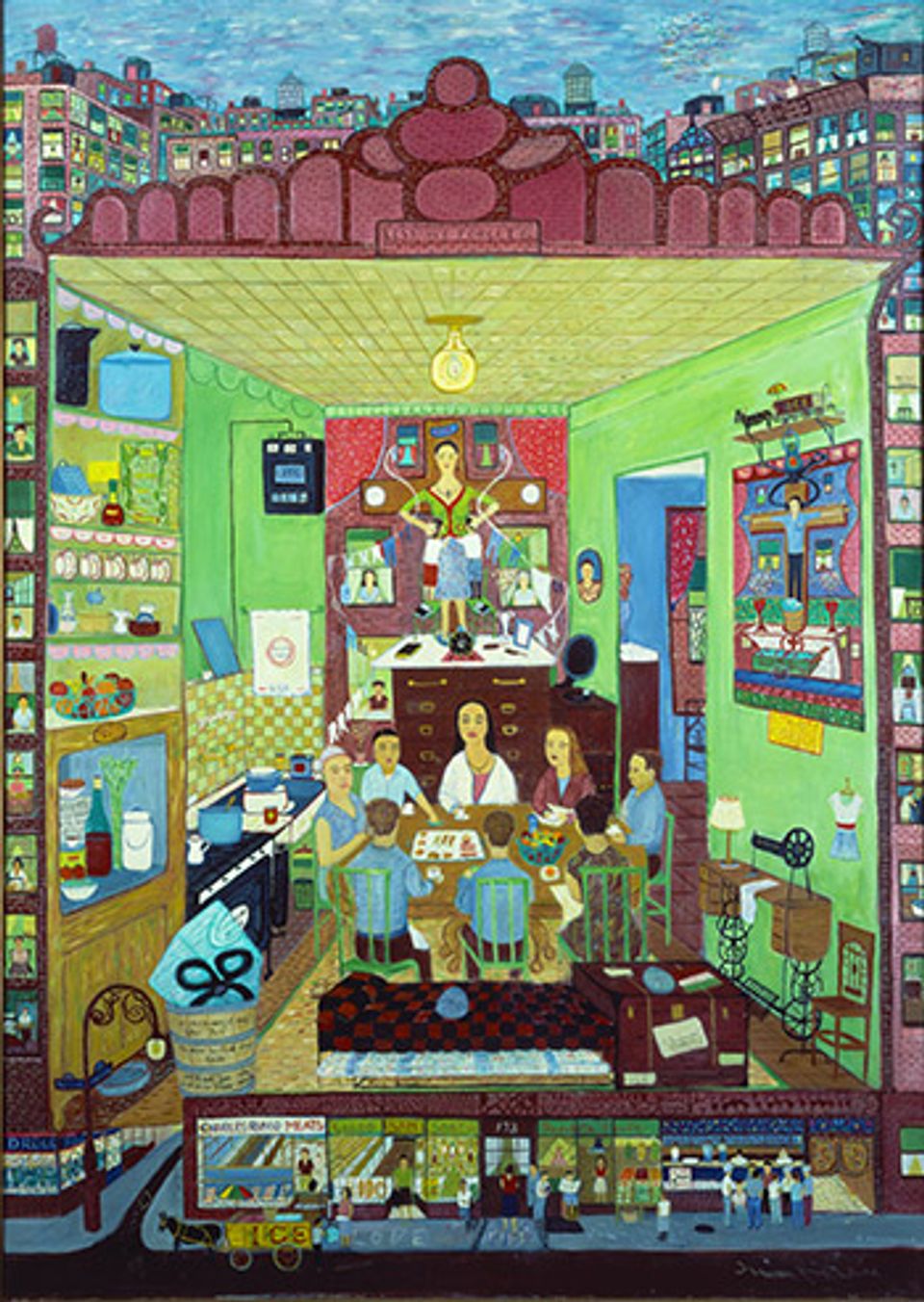

On the occasion of the exhibition, Ralph Fasanella: Lest We Forget, marking the artist's one-hundredth birth anniversary, Ralph's son Marc shares his thoughts on his father's iconic painting, Family Supper. Ralph Fasanella: Lest We Forget closes this Sunday, August 3, at American Art.
"I know so much and yet so little about this painting. It makes me realize that my father was born in a time where radio, television, automobile travel, refrigeration, telephones, flight, industrial agriculture were uncommon or didn’t exist. He came of age and lived his life throughout a period of remarkable technological and social change. On the left hand side of the kitchen depicted is the ice box containing home made wine and imported cheese, it is topped with fresh locally grown fruits and vegetables, in the upper left is a gas meter use for cooking, heat and lighting, my grandmother is centered in the top portion of the painting depicted as a crucifix tied to the cross by her career in the needle trades and below as the intellectual and emotional center of the family, to the right is my grandfather crucified by the ice picks and tongs of his trade, along the bottom of the painting is the steamer trunk of an immigrant family and a day and trundle beds where two members of the family needed to sleep for lack of space anywhere else in the apartment. In the center of the painting sits my father with his mother, a family friend, and my aunts and uncles (my grandfather notably absent from an otherwise complete familial scene).
"The kitchen and the meal they are enjoying is shown encased in the little Italy neighborhood in which they dwelt. I can hear the sounds of the tenement neighborhood and taste the pastries my grandmother made (though I never met her). I can feel the warmth and tensions of the family members sharing a meal. I can see the light, the radiance my father put into every detail of that kitchen. How those meals and discussions shaped my father, made him an empathetic guy with an ability to engage people on many different intellectual and emotional levels. His brothers and sisters were very unalike and ranged from highly intelligent to not so much, and though he was closer to some, he loved and understood all of them equally.
"I marvel at how removed so many in the United States have become from a life centered around communal family meals where life is shared, argued and dealt with over delicious home cooked food purchased from trusted grocers who would give you produce on personal credit—no banks involved. I marvel at how similar so many immigrant families are today in their habits, aspirations and trades. I marvel at how far removed my life has become from this pre-WW II lifestyle and how I long for and cherish the time to share similar meals with my family, how technology has made me rich in comfort and poor in culinary and emotional gratification. Family Supper is a foreign image from another age to me and I yet I strongly see it as my heritage, my home—a marriage of basic elements of my intellectual and emotional core. It stands for so much that I believe in and seems so remote."
Check out Marc's previous interview with Eye Level. After the close of the exhibition here at American Art, it travels to the American Folk Art Museum in New York City where it will run from September 2, 2014 to November 30, 2014.

















